BLOG – How To Green Your Alleyway
Background
Alleyways, Ginnels or Alleys – whatever you call them, these shared spaces are a staple feature in Greater Manchester’s landscape. Running behind rows of terraced houses, these corridors have been connecting neighbours for over 100 years.
Here at Groundwork, we’ve been supporting communities to re-think these often-neglected spaces for over 20 years. Greening alleyways bring neighbours together, while creating a much-needed stepping stone for nature in urban environments.
Throughout the Covid-19 lockdown, interest in alleyway projects grew, as more people sought out local green spaces and opportunities to connect with others outdoors.
If you’ve been inspired and want to unit your community to make such improvements, Groundwork can help.
Our Community Projects Lead Amy, has put together this guide to make the process behind alleyway greening clearer, and give you the tools and tips for success.
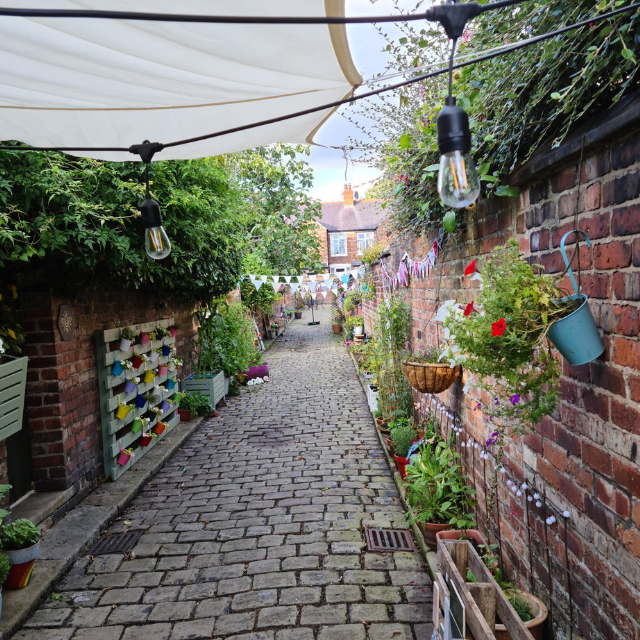
What are the benefits of alleyway greening?
Here’s a few of the wonderful benefits of starting a community project like this:
- Bringing nature into urban spaces
- Providing safer space for children to play
- Meeting and relaxing with neighbours
- Creating ‘wildlife corridors’ and habitats for bees and butterflies
- Feeling more pride and belonging in your neighbourhood
- Reducing fly tipping and litter
- Improving recycling rates
- Learning new DIY, gardening and growing skills
- Improving mental health and well being
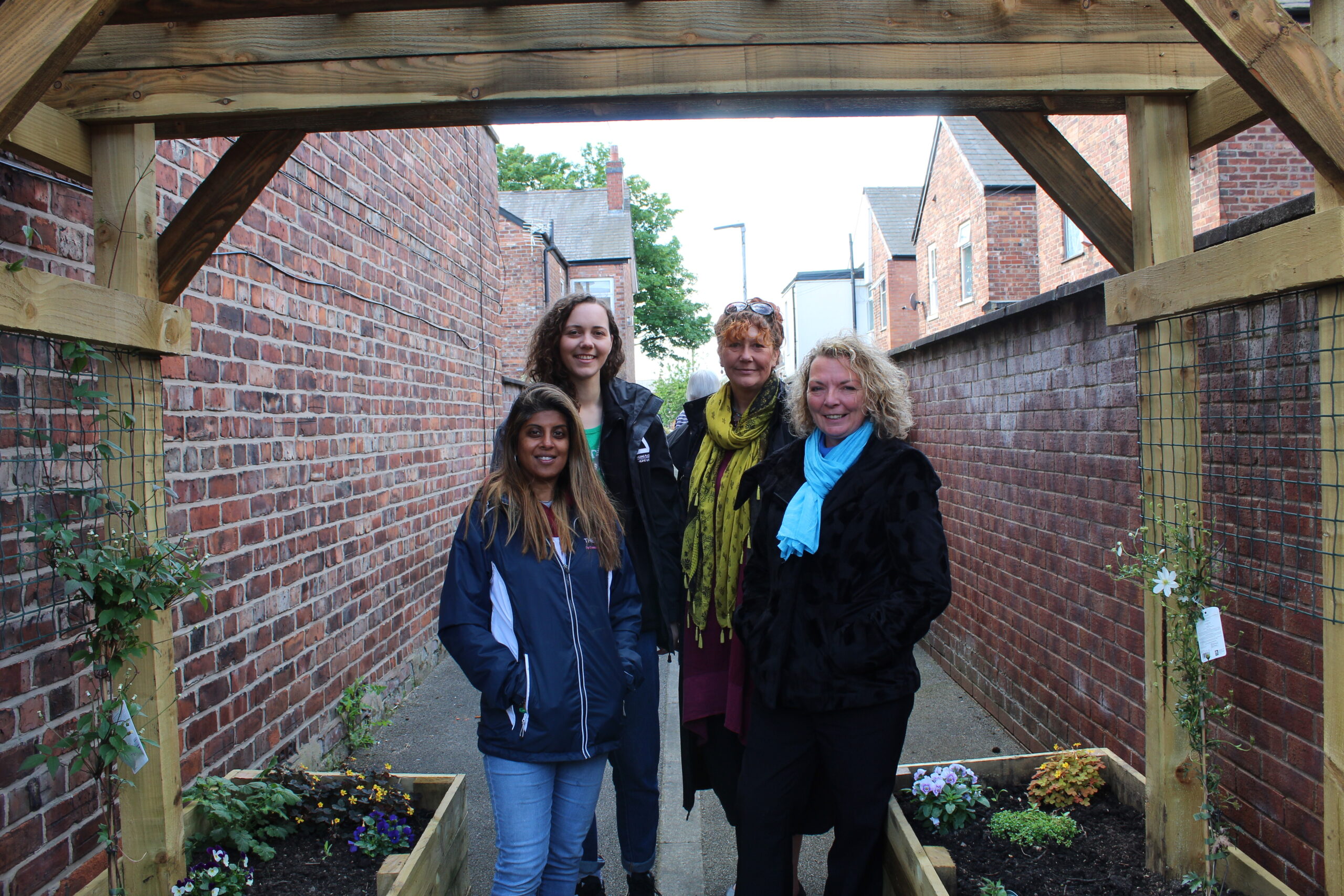
Getting started on your alleyway project
Step 1 – Get inspiration from other alleyway projects
Walk around your neighbourhood, reach out to other groups and request a visit, take a look on social media for local projects.
Here’s a few local projects we know and love:
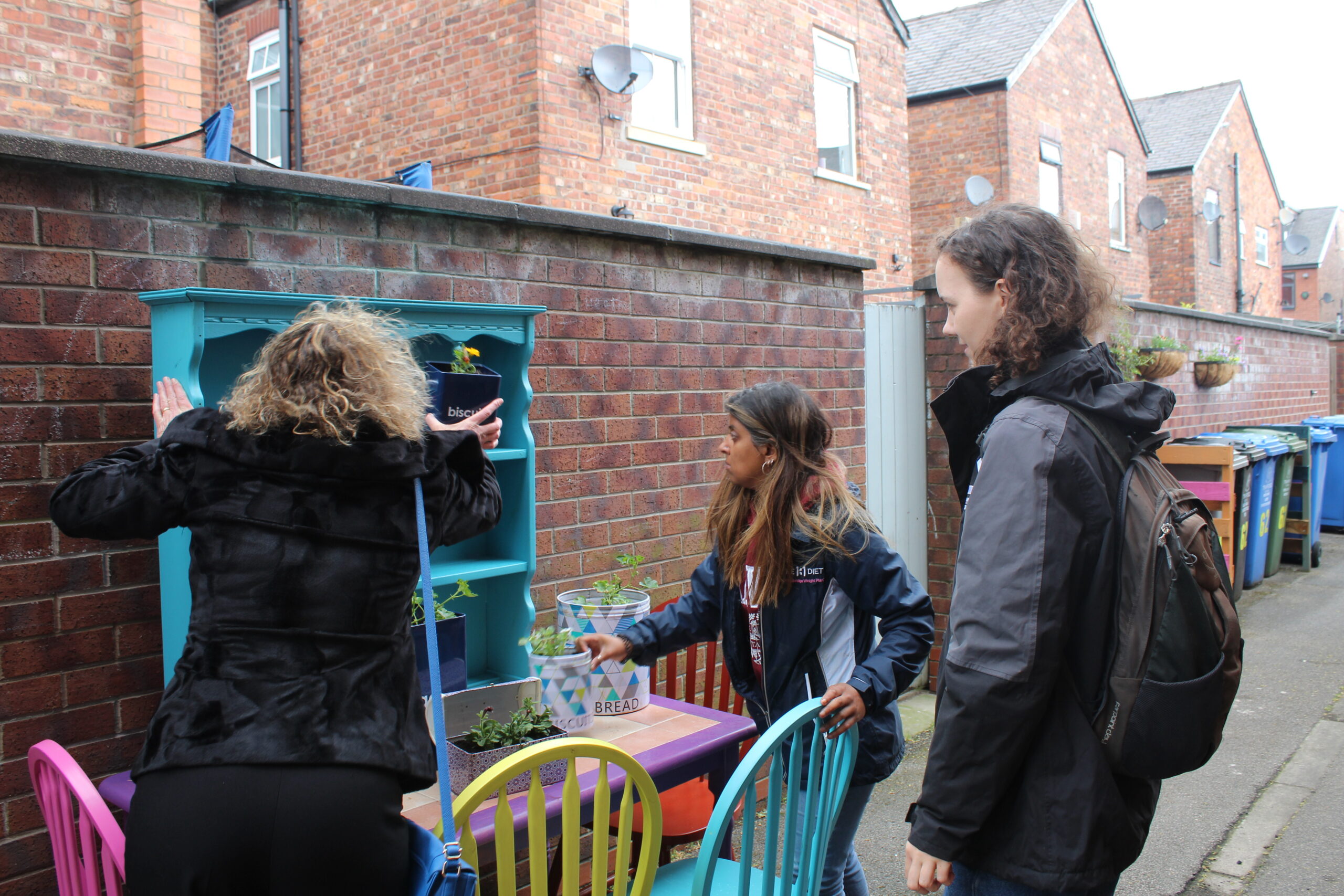
Step 2 – Take some before photos!
Take photos of what your alleyway looks like before you get started on your community project, so you have some pictures to demonstrate the difference community action can have. This will help recruit neighbours to become involved and keep regular volunteers motivated.
Step 3 – Start reporting any fly tipping
By regularly reporting fly tipping and litter on your council’s website, action will be taken to tidy it up deterring people from doing it again. Keeping your alleyways as tidy as possible will put people off leaving rubbish and inspire them to rethink what it could be in the future.
Bringing your community together
No community project is complete without a dedicated group of people to make it happen. Here are our top tips for encouraging others to get involved.
- Talk to your neighbours
You’ll need a core group of people dedicated to the project for it to work (team work makes the dream work!). You should seek to find 6 people from different households, so there’s enough of you to help set up the project and maintain the community planting. The best way to find these people is to knock on your neighbour’s door and speak to them about your ideas.
- Make a leaflet
It’s not always possible to get hold of your neighbours simply by knocking on the door, by creating a quick leaflet which you can share around other houses on your street you can provide opportunities for other to get involved. Canva is an easy to use and free online resource packed full of template posters and leaflets which you can easily edit and print.
- Stay Connected
Setting up a WhatsApp group is a great idea to keep interested neighbours connected and updated as you plan tidy up or planting days.
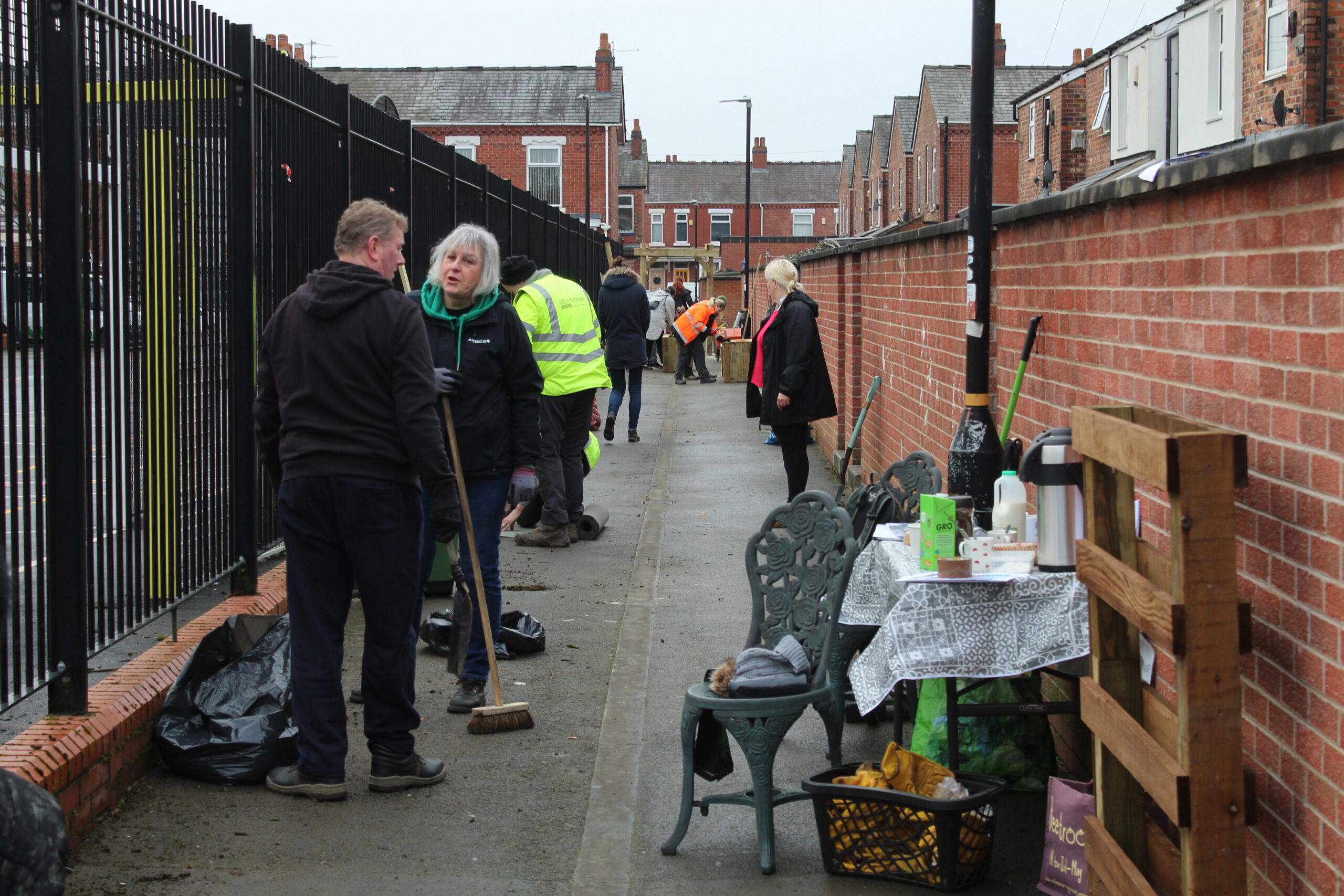
Getting permissions for alleyway greening
The legalities of planning a project like this can be hard to navigate.
First and foremost, speak to your local councillors, council neighbourhood officers or housing organisations for advice on permissions for carrying out improvements in your chosen space. Contact details for these people can typically be found on your local council website.
Make sure to take a look at the land registry too to find out about any restrictions you need to consider.
If you are struggling with gaining permission or are experiencing long delays, you can normally get started with small improvements. As long as materials are moveable and you are able to take care of the space, most landowners are happy to see spaces improved for community benefit.
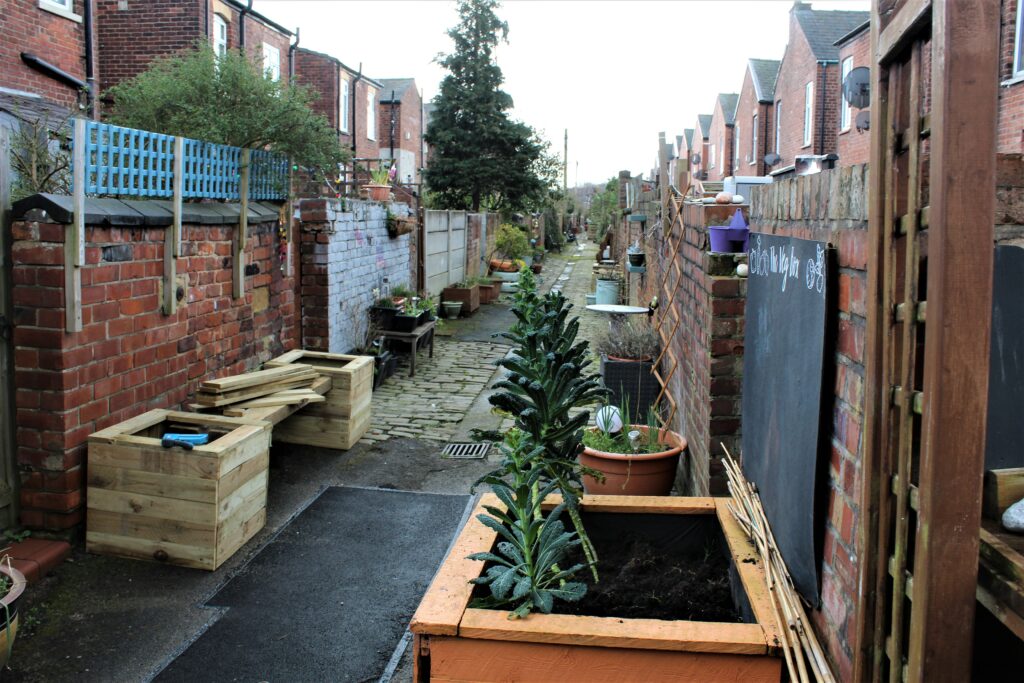
Maintaining your alleyway
Many community groups find that maintaining their alleyway is one of the most difficult tasks, so here’s a few pieces of advice to ensure your neighbours maintain momentum.
- The first tidy up day can generate the most interest, make sure you maximise this! Make sure everyone who attends joins your WhatsApp group and make sure you have follow up action days in the diary to keep people interested.
- Make your alleyway improvements small and simple at first. Creating big, ambitious projects, although exciting, can put people off and may lead to your core group of volunteers to become burnt out. Start small and build on your alleyway greening overtime. Remember, this should be fun, not overwhelming.
- If you or your neighbours have practical DIY skills or gardening skills make sure these are shared with others in either formal, arranged sessions or informally. People love learning new skills plus, by sharing skills, you can distribute tasks so they don’t all fall to one person.
Finding materials for your alleyway project
Alleyway greening requires plants, plant pots and other materials to happen. But don’t worry you don’t need to hundreds of pounds to get started. There are many different avenues to explore when it comes to building up your alley greening project.
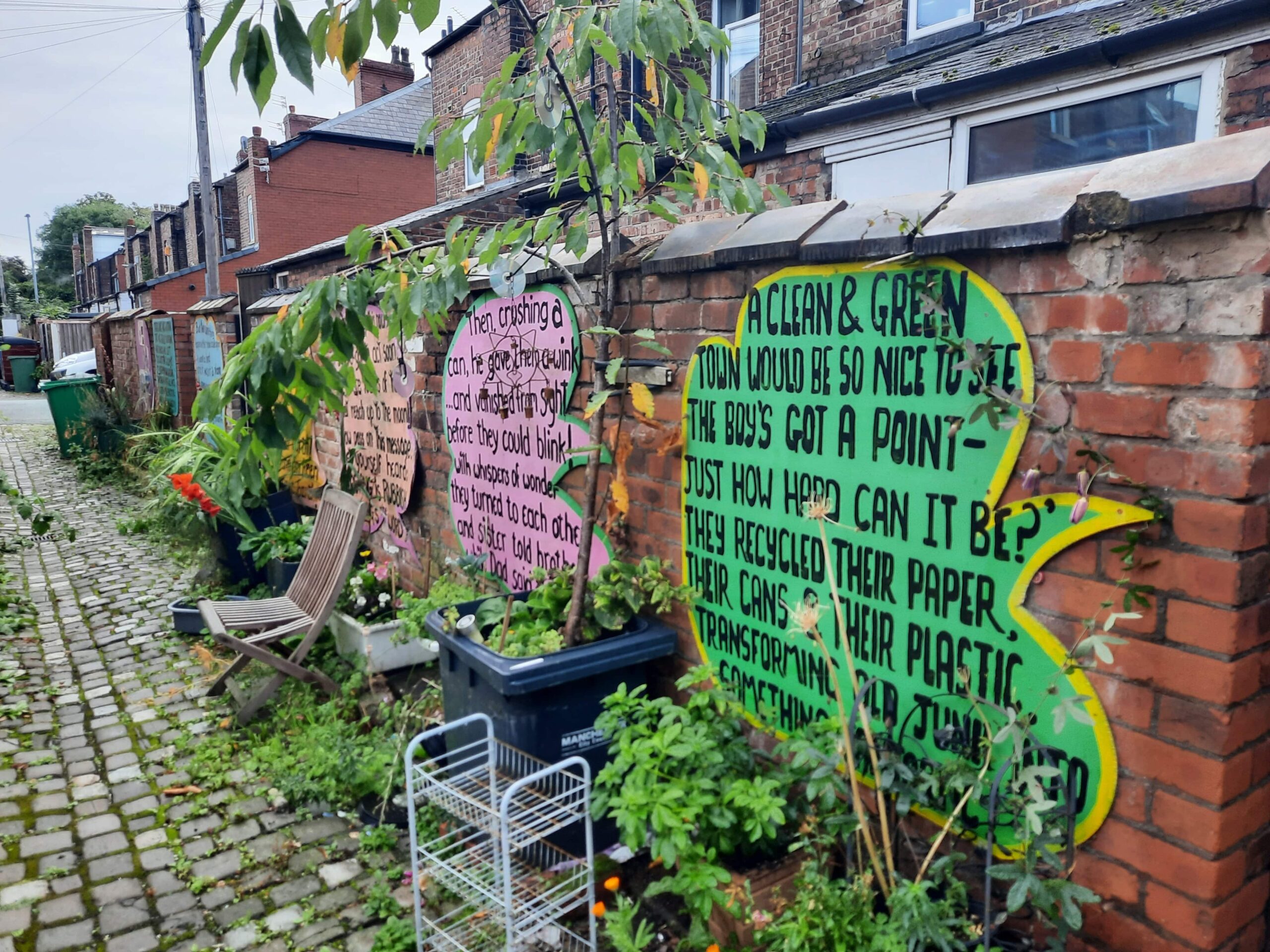
Here are a few of our top tips:
Speak with your council
- Contact your local council or councillor for litter pickers and binbags to get you started with tidy up days. Many councils organise jet washes of your alley, quickly creating a clean canvas for your greening.
Source donations
- It’s amazing what you can get donated if you just ask! Speak to local businesses or supermarkets to see if they have any spare plants or bulbs. Community garden centres such as Hulme Garden Centre often have reuse schemes where you can pick up spare plant pots for free.
- The B&Q Community Reuse Scheme offer materials for free for community projects – from wood offcuts, paint, plants and plant pots.
Applying for funding
It is easier to apply for grant funding if your community group becomes ‘constituted’. This process requires your group of volunteers to adopt a constitution – setting out the name and purpose of your group, group members and roles, processes you will follow, health and safety etc. You will then be able to set up a bank account, apply for grants, buy insurance, your own equipment and even employ staff. However, we would suggest exploring the above options before making this commitment as it may be a distraction from your core project.
A few funding streams available in Greater Manchester (at time of writing, January 2023) include:
- Greater Manchester Greenspace Fund which is supporting community-led projects that increase the amount and quality of accessible, nature-rich green space in the city region, particularly in the areas where people need it most.
- Tesco community grants offer up to £1500 funding for community groups through their ‘blue tokens’ scheme, where Tesco shoppers vote in stores for three local good causes every three months.
- Be sure to check with your local council too, as they may also have funding available for local community projects.
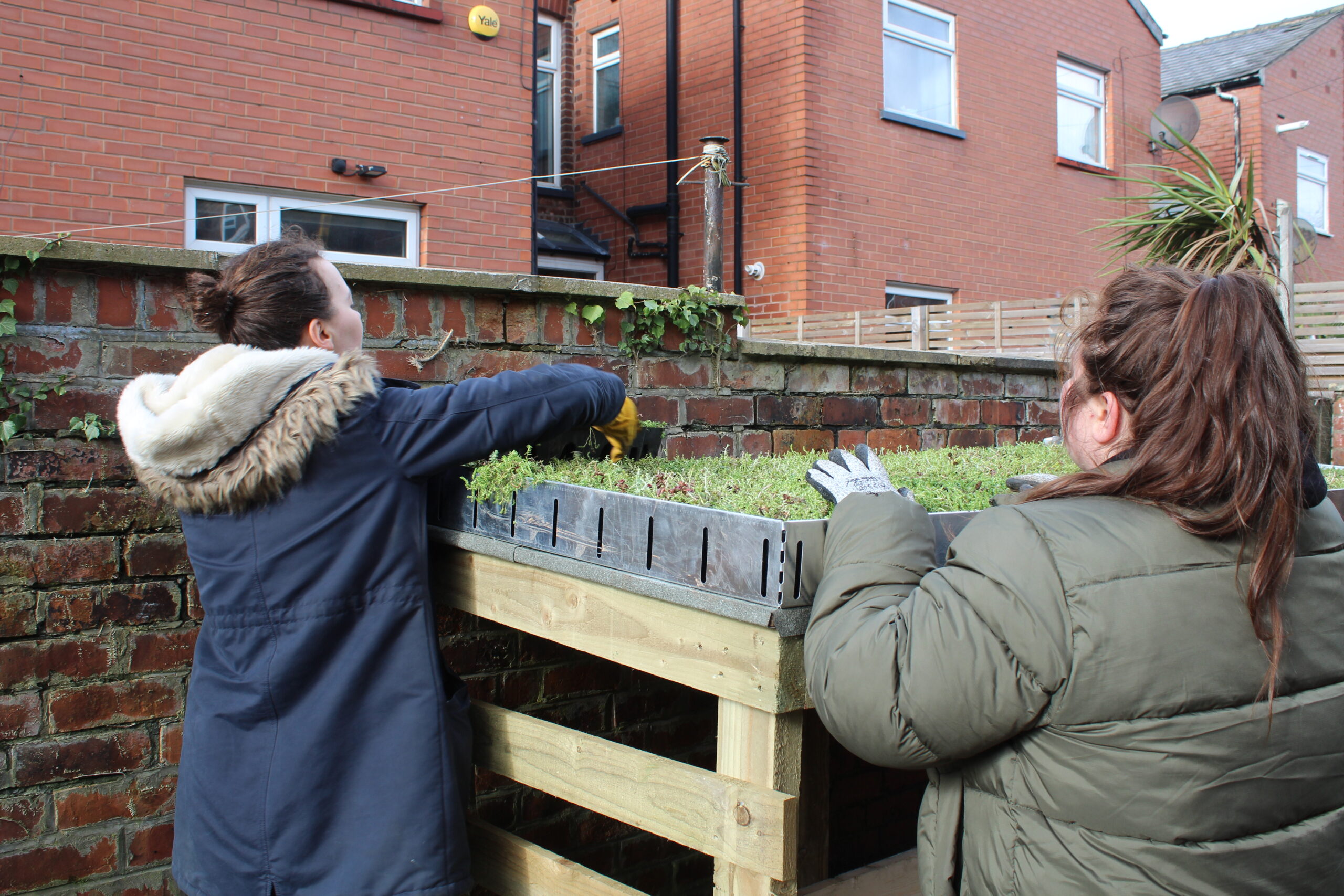
Alleyway features which help tackle climate change
By greening your alleyway with plants alone you’ll be creating an important stepping stone for nature as well as increasing biodiversity and improving air quality.
However, you can also install features which go further, tackling climate change issues such as excess rainwater.
We’ve created several guides on how to create features such as green roofs, living walls and rain gardens. Check them out below:
